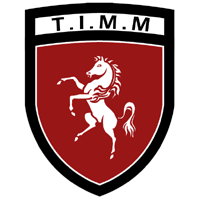Guide to unit sizes mentioned
A rough generalisation for British Army Infantry units in WW1 (which also mostly applied to WW2). Numbers of men are approximate at full establishment. When units were undermanned, junior ranks would often fill much more senior roles -
Section (12-15) - Commanded by a Corporal.
Platoon (50-60) - Commanded by a 2nd Lieutenant or Lieutenant.
Company (230-240) - usually 4 Platoons - Commanded by a Major or Captain.
Battalion (1000) - HQ Company, 4 full Companies plus it's transport - Commanded by a Lieutenant Colonel.
<Each Battalion belonged to a Regiment, and shared badges and uniform, but Battalions functioned independently>
Brigade (4,000 - 7,000) - Around 4-7 Battalions coming from a mixture of Regiments. Commanded by a Brigadier.
Division (16,000 - 18,000) (plus around 5,500 horses) - A full independant fighting unit including 3-4 infantry Brigades, plus it's own artillery, signals, transport, engineers, cavalry and field ambulance units. Commanded by a Major-General. (Note: a "Cavalry Division" was smaller at around 9000 men + 2500 horses)
Click here
to view the rank structure of the British Army.
Guide to medals found in the collection
Here you can find information on the medals which can be found among the collection.
Orders and Decorations
Military Medal
Efficiency Decoration
Mentioned in Dispatches
Long Service Awards
Medal for Long Service and Good Cunduct (Military)
Special Constabulary Long Service Medal
Pre-WW1 Medals 1900-1913
WW1 Medals 1914-1920
1914 Star
1914-15 Star
British War Medal
Victory Medal
Mercantile Marine War Medal
Territorial Force War Medal
WW2 Medals 1939-1945
1939-45 Star
France & Germany Star
Pacific Star
Defence Medal
War Medal 1939-45
Australian Service Medal 1939-45
 The Invicta Medal Museum (Online)
The Invicta Medal Museum (Online)